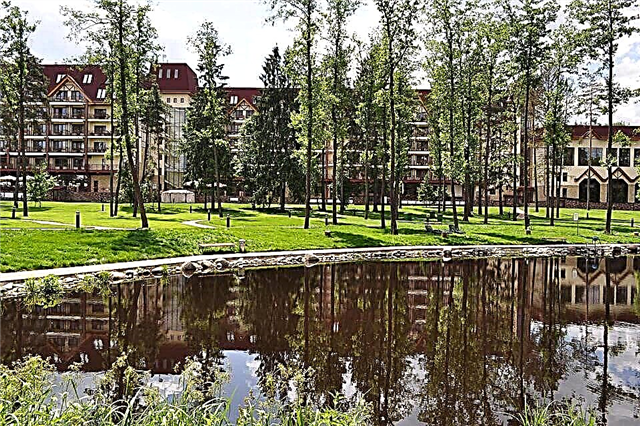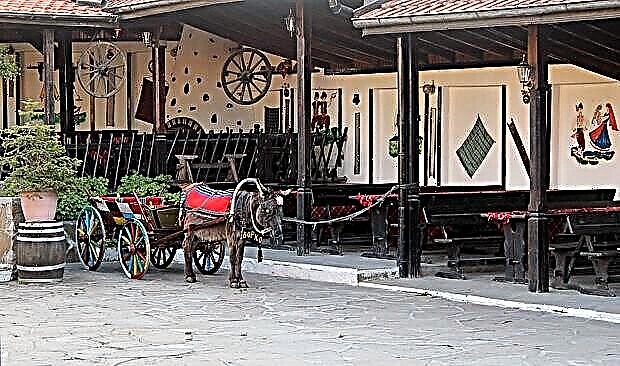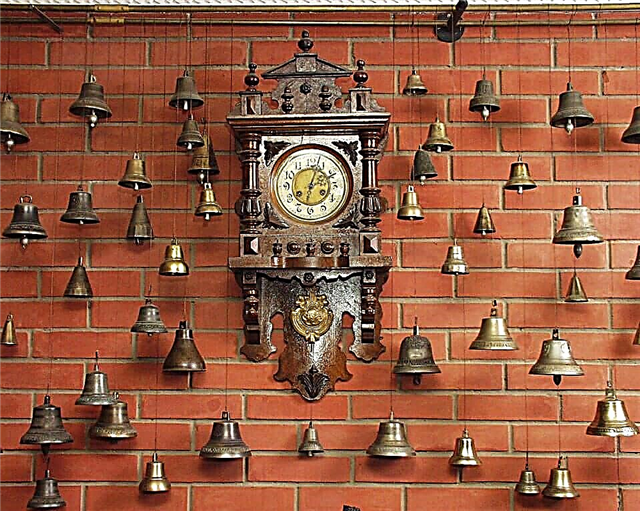Address: Moscow, Tverskaya st., 21
Foundation date: 1917 year
Coordinates: 55 ° 45'58.2 "N 37 ° 36'05.7" E
Content:
The former Museum of the Revolution, and now the Museum of Contemporary History of Russia, is one of the most famous museums in Moscow. More than 1 million 300 thousand exhibits are kept in its funds. Therefore, the Moscow Museum is considered one of the largest museums of modern history in the world. Many Muscovites and tourists come here to get acquainted with the events taking place in the country.

View of the building of the State Central Museum of Contemporary History of Russia from Tverskaya Street
How the museum was born
The idea to create a museum dedicated to revolutionaries appeared in the spring of 1917. The February revolution has just happened in Russia, and the journalist Vladimir Pavlovich Kranichfeld suggested opening a new museum in Moscow. The decision was made, however, the matter did not go beyond the creation of the Society for the arrangement of the future museum.
The Civil War broke out in Russia, followed by a period of famine and devastation. The country was forced to solve the most urgent problems, and hands simply did not reach the new museum. The case got off the ground only in 1922. For the 5th anniversary of the revolution, the first exhibition with the loud name "Red Moscow" was organized in the city center.

A model of an armored car at the entrance to the museum from which V.I. Lenin in 1917
Two years later, a museum was created, and the former revolutionary and historian Sergei Ivanovich Mitskevich became its director. The museum expositions consisted of materials from two exhibitions - "The History of the Party" and "Red Moscow".
Museum in the XX century
The new museum revealed the essence of the revolutionary movement in the country, starting from the 17th century. Here one could learn about the peasant wars led by Stepan Razin and Emelyan Pugachev, about the uprising in December 1825 and the work of the revolutionary-minded commoners. Separate sections were devoted to the civil war and the three revolutions of the beginning of the last century.

Hall No. 17. USSR in the mid-1950s - early 1980s.
There are a lot of museum exhibits. They were brought by former members of revolutionary organizations and their closest relatives. Famous artists donated their paintings to the museum. For example, Ilya Repin donated several historical works and a painted portrait of Kerensky to the museum.
As the funds grew rapidly, after a few years the exposition was expanded. In addition to the history of the revolutionary movement, she began to talk about the milestones in the construction of a socialist society. At the end of the 1930s, one million exhibits were already stored here. However, only some of them were exhibited in the halls. Most of the museum relics were shown during historical exhibitions.

In the summer of 1941, when it became clear that the Nazi troops were rushing to Moscow, the museum was evacuated. But the building was not empty. In the same month, it hosted an exhibition dedicated to the outbreak of the war. In the courtyard, in full view, the museum staff, who remained in Moscow, installed a shot down German plane, mangled German cannons, a wrecked tank, a machine gun and mortars. Towards the end of the war, the exhibition began to be restored, and the main funds were returned to the capital.
In the 1960s, the Moscow Museum began to oversee museums of a similar trend, which were opened one after another all over the country. The exposition has new topics that reveal medicine, the education system and environmental protection in the USSR.

When perestroika began, many archives were declassified. The museum staff put more than seventy thousand exhibits for free access, which until that time could not be seen by ordinary visitors. Then they held several exhibitions covering various events taking place in the country.
Museum today
The museum is housed in a beautiful building built at the end of the 18th century. From 1831 to 1917, the English Club was located in the classic mansion. The museum halls are designed by theme. In addition to documents and old photographs, they display badges, orders and medals, old postcards, banners, rare books and posters. Porcelain products, ceramics, graphic works, paintings, collections of domestic and foreign lacquer miniatures and antique furniture are considered the real decorations of the exposition.

In the first hall, visitors get acquainted with the changes that Russia experienced after the abolition of serfdom. The agrarian country switched to industrial lines. Over the last two decades of the 19th century, the railway network in Russia has doubled, and heavy industry has grown sevenfold. Walking from hall to hall, tourists can learn about the foreign policy of the Russian Empire at the turn of the XIX-XX centuries, revolutionary events, civil war, about how the crisis of the Soviet system was growing and perestroika took place.
The spacious Fireplace Hall of the English Club is of great interest. It is decorated with snow-white Corinthian columns and a painted ceiling. On the walls there are picturesque canvases representing the main milestones in the history of Russia. They were written by famous artists Konstantin Yuon, Kuzma Petrov-Vodkin, Martiros Saryan, Pyotr Konchalovsky, Ilya Mashkov and Boris Kustodiev.

Visitors stay for a long time in Hall 16, where gifts made to the leaders of the Soviet state are exhibited. These are objects of art, rare weapons, richly decorated national costumes, ceramics and jewelry brought from 40 countries of the world. Since the museum is dedicated to the modern history of the country, several rooms tell about the events that took place in Russia at the beginning of the XXI century, as well as about the symbols of the country.
Exhibitions and educational programs
For many years now, museum staff and historians have been publishing the journal "Living History". The publications in it are dedicated to outstanding historical figures and the history of the state. Since 2017, the museum has hosted a large exhibition dedicated to the centenary of the revolution. On it you can see rare sound recordings, films, photographs and things of a century ago.

For everyone, there is a lecture hall where historians and art critics speak. The topics of the lectures are different. The stories about the manuscripts of A.S. Pushkin, unrealized projects of the Moscow metro and persecution of the church during the Soviet era.
Useful information for visitors
The doors of the museum are open to guests on Tuesdays and Thursday through Sunday from 11:00 to 19:00, and on Wednesdays from 12:00 to 21:00. Monday is a day off. It should be borne in mind that the ticket office closes half an hour earlier. A ticket for an adult costs 250 rubles, and for children - 100 rubles (2018). Children under 16 are admitted to the museum free of charge. Photo and video filming are paid separately.

Fireplace Hall of the English Club
Tourists can view the exhibition on their own and with a guide. Sightseeing and thematic excursions are held in the halls: "My country is Russia" and "Russia in the XXI century". For lovers of Russian history, the museum has a club "KLIO".
How to get there
The museum is located in the very center of the capital, so it is convenient to get to it from any part of Moscow. It stands at 21 Tverskaya Street, a 5-minute walk from Pushkinskaya, Tverskaya and Chekhovskaya metro stations. Not far from the museum building, on Pushkinskaya Square, buses stop carrying passengers along Tverskaya Street.











